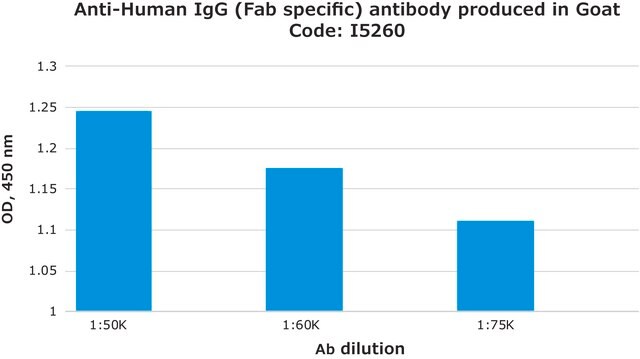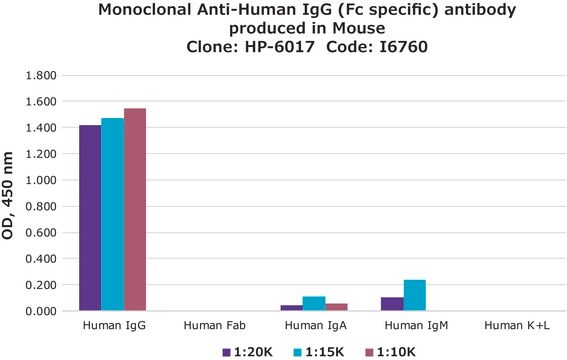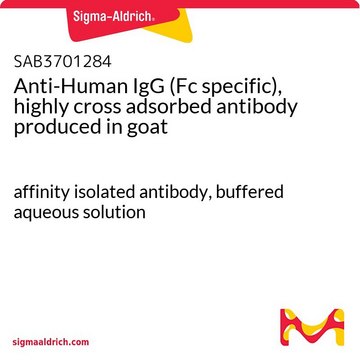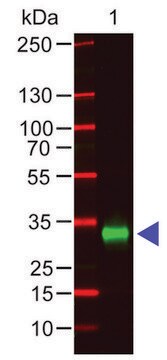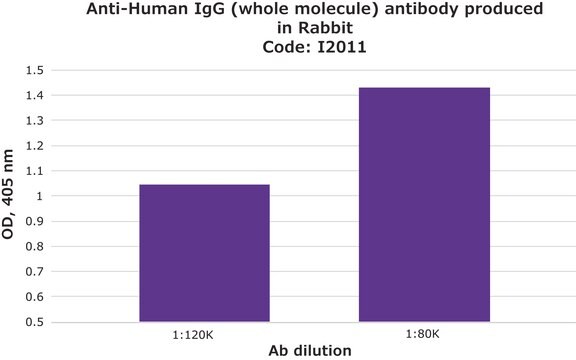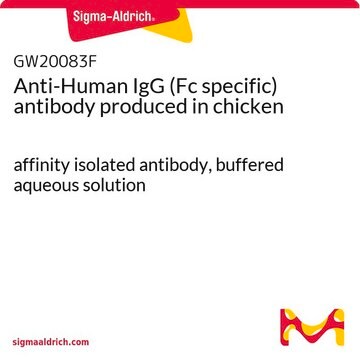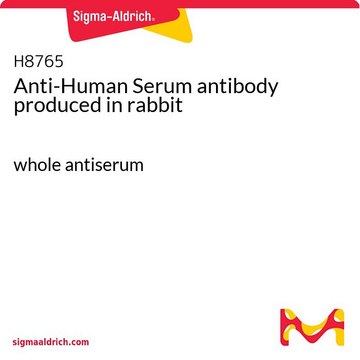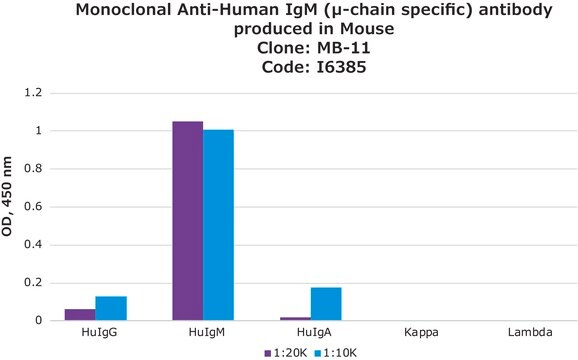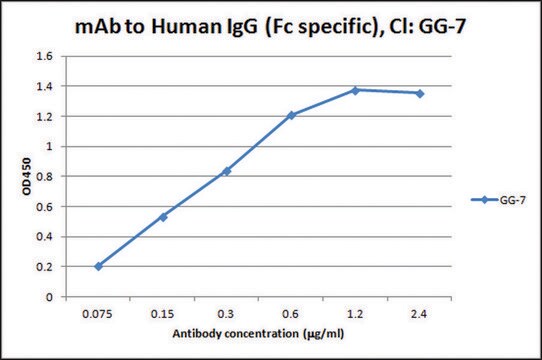I9135
Anti-Human IgG (Fc specific) antibody produced in rabbit
whole antiserum
Synonym(s):
Human Antiserum, Rabbit Anti Human IgG - Anti-Human IgG (Fc specific) antibody produced in rabbit, Rabbit Anti Human Igg, Rabbit Antiserum
Sign Into View Organizational & Contract Pricing
All Photos(1)
About This Item
Recommended Products
biological source
rabbit
Quality Level
conjugate
unconjugated
antibody form
whole antiserum
antibody product type
secondary antibodies
clone
polyclonal
contains
15 mM sodium azide
technique(s)
indirect ELISA: 1:100,000
quantitative precipitin assay: 1.5 mg/mL
shipped in
dry ice
storage temp.
−20°C
target post-translational modification
unmodified
Related Categories
General description
IgG contains four polypeptide chains, made of two identical 50 kDa γ heavy (H) chains and two identical 25 kDa κ or λ light (L) chains, that are associated by inter-chain disulfide bonds. IgG contains four isotypes IgG1, IgG2, IgG3 and IgG4.
Application
Anti-Human IgG (Fc specific) antibody produced in rabbit was used in immunoblotting and immunocytochemistry.
Applications in which this antibody has been used successfully, and the associated peer-reviewed papers, are given below.
Immunohistochemistry (1 paper)
Immunohistochemistry (1 paper)
Biochem/physiol Actions
IgG activates the classical pathway of the complement system. It neutralizes virus particles and toxins. IgG plays a pivotal role in antibody-dependent cell-mediated cytotoxicity (ADCC) and phagocytosis. It might be linked to allergy and has the longest serum half life.
IgG antibody subtype is the most abundant of serum immunoglobulins of the immune system. It is secreted by B cells and is found in blood and extracellular fluids and provides protection from infections caused by bacteria, fungi and viruses. Maternal IgG is transferred to fetus through the placenta that is vital for immune defense of the neonate against infections.
Preparation Note
treated to remove lipoproteins
Not finding the right product?
Try our Product Selector Tool.
Storage Class
10 - Combustible liquids
wgk_germany
nwg
flash_point_f
Not applicable
flash_point_c
Not applicable
Choose from one of the most recent versions:
Already Own This Product?
Find documentation for the products that you have recently purchased in the Document Library.
Customers Also Viewed
Nancy William et al.
Molecular psychiatry (2021-06-26)
Suicide is a significant public health concern with complex etiology. Although the genetic component of suicide is well established, the scope of gene networks and biological mechanisms underlying suicide has yet to be defined. Previously, we reported genome-wide evidence that
John D Bartlett et al.
Cells, tissues, organs, 194(2-4), 222-226 (2011-04-29)
Dental enamel development occurs in stages as observed by the changing morphology of the ameloblasts that are responsible for enamel formation. During the secretory stage of development, proteins including MMP20 are secreted into the enamel matrix. MMP20 is required for
Kimberly M Stroka et al.
Blood, 118(6), 1632-1640 (2011-06-10)
A vast amount of work has been dedicated to the effects of shear flow and cytokines on leukocyte transmigration. However, no studies have explored the effects of substrate stiffness on transmigration. Here, we investigated important aspects of endothelial cell contraction-mediated
Puja Gupta et al.
BMC biotechnology, 10, 72-72 (2010-10-12)
EGF receptor variant III (EGFRvIII) is the most common variant of the EGF receptor observed in human tumors. It results from the in frame deletion of exons 2-7 and the generation of a novel glycine residue at the junction of
Franco Klingberg et al.
The Journal of cell biology, 207(2), 283-297 (2014-10-22)
Integrin-mediated force application induces a conformational change in latent TGF-β1 that leads to the release of the active form of the growth factor from the extracellular matrix (ECM). Mechanical activation of TGF-β1 is currently understood as an acute process that
Our team of scientists has experience in all areas of research including Life Science, Material Science, Chemical Synthesis, Chromatography, Analytical and many others.
Contact Technical Service


